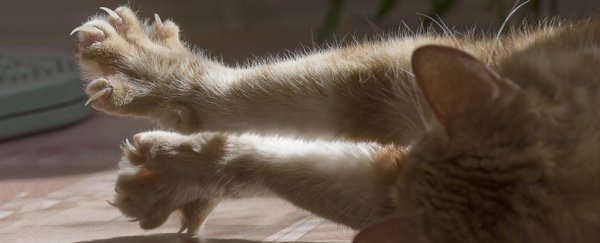New York is one signature away from becoming the first state in the country to ban cat declawing, a practice advocates say serves no benefit to felines and is done typically out of convenience.
The bill, which passed by a wide margin Tuesday in the state's majority-Democrat Assembly and Senate, would impose a US$1,000 fine on veterinarians who perform the procedure for non-medical purposes.
That means pet owners in the state would no longer be able to have their cats declawed for cosmetic, aesthetic and other ostensible reasons.
One of several lawmakers to champion the measure, Assembly woman Linda Rosenthal (D-Manhattan) was visibly jubilant after the vote.
She has previously rallied against declawing and condemned its invasive nature in a statement: "It is not like getting a mani/pedi," she said. "It's a brutal surgical procedure."
"The days when this procedure is cavalierly offered for the convenience of the owners to protect couches and curtain are numbered," she added.
Rosenthal and other proponents of the bill say declawing, or onychectomy, can cause long-lasting complications for cats. New York director for the Humane Society of the United States Brian Shapiro, who advocated the legislation, explained the procedure is not as simple as removing a cat's nail; it requires amputating the last bone segment in a cat's toes.
He likened it to chopping off the tip of a human finger at the first knuckle. The legislation is a "great victory," he added.
Some estimate 25 percent of cats in the United States are declawed, and Shapiro said veterinarians are generally divided on the issue.
The New York Veterinary Medical Society, for example, argues declawing should be allowed if a cat is using its claws destructively, or if a potential scratch could pose health risks to households containing people with weakened immune systems.
The Centers for Disease Control and Prevention recommends sanitation methods and selective pet ownership over declawing.
The origins of declawing date back to at least 1952, when the Journal of the American Veterinary Medical Association published a letter to the editor from Chicago veterinarian A.G. Misener, who described the procedure as a "practical measure".
Speaking to The Washington Post in 2017, Minnesota veterinarian Ron Gaskin said Misener's practice was widely adopted across the United States - namely to keep cats from scratching up furniture - despite a lack of scrutiny on the procedure.
"It was never investigated for long-term safety, or whether it generated pain later on in life," Gaskin said. "It was never researched that way."
Several cities in the United States and the majority of Canadian provinces have banned declawing, according to Rosenthal. The procedure is also outlawed in Britain, Germany, Austria, Sweden and several other countries.
Acknowledging New York is leading the way at the state level, Rosenthal said she hopes others will follow their lead. Lawmakers in California, New Jersey, Massachusetts, Rhode Island and West Virginia are pushing to pass similar legislation.
The bill will now be delivered to the desk of Governor Andrew M. Cuomo (D-N.Y.), who has indicated he will review the measure before making a decision.
2019 © The Washington Post
This article was originally published by The Washington Post.
